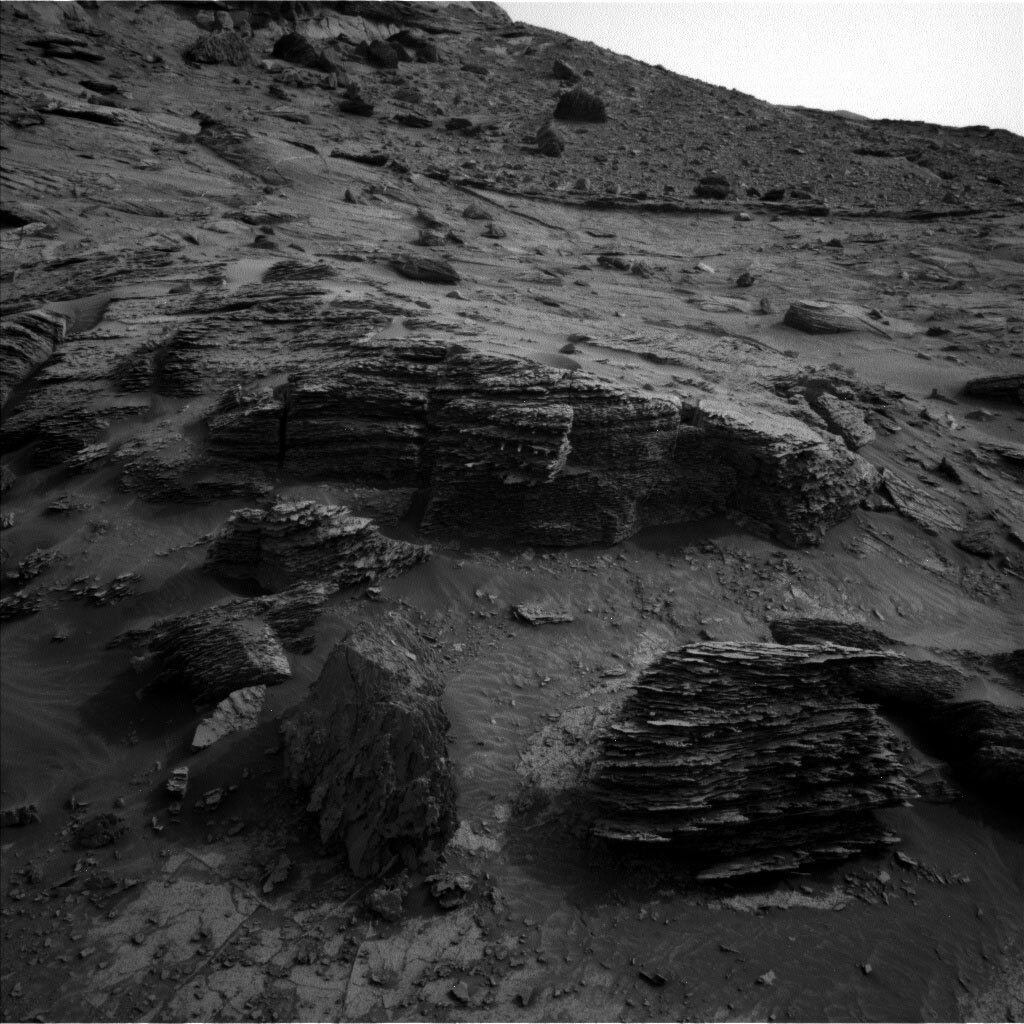2 min read

We continue to document rocks similar to what we saw at "The Prow," a dark appearing rock outcrop with amazing sedimentary structures and details. To do this, we need to get as close as possible to an outcrop surface but that has called for some short multi-plan drives, as we manoeuvre to a new feature called "Panari" (a length of roughly 20 metres away from The Prow). In our last plan, we edged towards the inclined rock in the front right corner of the image, ending on some flatter rock a safe distance back. This end of drive allows the Rover Planners to vet the inclined rock, finding the optimal location to place us for up close contact science after a short “bump” or drive (less than 3 metres in total) on the third sol of this plan.
First however, GEO has a lot of work to do! First we will document the flatlying rock underneath us. The target “Chimata” in front of the rover will be brushed to clear the dust and then analyzed by both APXS and Mastcam. This material is a somewhat paler colour than The Prow and the inclined rocks at Panari, so we are investigating to see if the tonal differences are reflected in the composition. ChemCam will use the LIBS instrument to target two smaller targets (“Mataui” and “Kamarang”) and the Mastcam targets “Auyan” and “Uei” look at sand movement overlying fractures and along the side of flatlying bedrock. ChemCam will also target the inclined block with LIBS (“Apparam”) and its imaging tool (RMI) (target “Karwai”), whilst Mastcam will image a similar block “Quino” a bit further in the distance.
ENV also have a busy plan, with multiple monitoring activities, looking at changing dust levels in the atmosphere, and a full day of REMS only activities on the last day of this crammed four sol plan!
Written by Catherine O'Connell-Cooper, Planetary Geologist at University of New Brunswick







